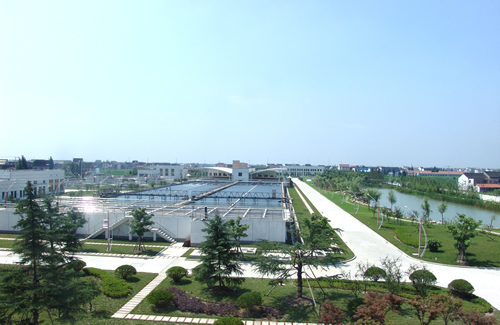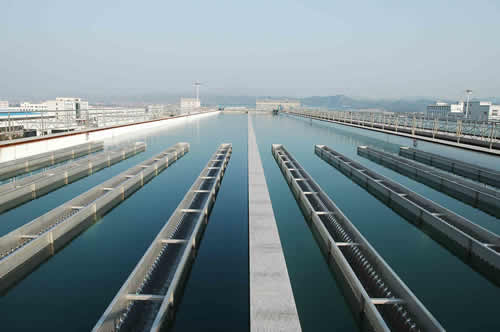ClO2 for Portable Water Treatment

Chlorine dioxide’s broad spectrum capabilities enable it to be used in a variety of potable water applications
§ Iron & Manganese Oxidation
§ Taste & Odor Control
§ Trihalomethane (THMs) & Haloacetic Acids (HAAs) Control
§ Color Removal & Algae Control
§ Cryptosporidium Inactivation
§ Nitrification Control
§ Zebra Mussel Control

Chlorine dioxide is a versatile broad spectrum disinfectant that can also be used as a primary disinfectant in potable water, as it reduces or controls bacteria, viruses, cysts and algae(pseudomonas, e.coli, Cholera,cryptosporidium,Giardia, etc…).while being effective over wide temperature & pH ranges. Using chlorine dioxide will help optimize overall treatment efficiencies, including improved coagulation, reduced turbidities, improved particulate removals, increased CT values and lower THMs and HAAs levels.

It has superior disinfection capabilities over elemental chlorine and, through its selective chemistry, it reacts quickly to oxidize and reduce the organic load in the water. Chlorine dioxide is not a chlorinating agent and can be used as a primary disinfectant, or as a raw water oxidant, for THM and HAA precursor reduction in potable water treatment systems.
Chlorine dioxide is an interesting alternative to Chlorine because of the completely different relationship involved between action and reaction. Chlorine dioxide does not produce organic, chlorine compounds with those contaminants most frequently found in water, e.g. Chloro phenols or halogenated Hydrocarbons (for example Halo forms such as Chloroform which is considered carcinogenic).The compounds formed from the reaction of Chlorine dioxide with organic water contaminants are therefore largely negligible in terms of sensory or toxicity considerations. This makes Chlorine dioxide an ideal disinfectant for the treatment of drinking water and process water or for circuit water systems.
Chlorine dioxide’s broad spectrum capabilities enable it to be used in a variety of potable water applications
§ Iron & Manganese Oxidation
§ Taste & Odor Control
§ Trihalomethane (THMs) & Haloacetic Acids (HAAs) Control
§ Color Removal & Algae Control
§ Cryptosporidium Inactivation
§ Nitrification Control
§ Zebra Mussel Control

Chlorine dioxide is a versatile broad spectrum disinfectant that can also be used as a primary disinfectant in potable water, as it reduces or controls bacteria, viruses, cysts and algae(pseudomonas, e.coli, Cholera,cryptosporidium,Giardia, etc…).while being effective over wide temperature & pH ranges. Using chlorine dioxide will help optimize overall treatment efficiencies, including improved coagulation, reduced turbidities, improved particulate removals, increased CT values and lower THMs and HAAs levels.

It has superior disinfection capabilities over elemental chlorine and, through its selective chemistry, it reacts quickly to oxidize and reduce the organic load in the water. Chlorine dioxide is not a chlorinating agent and can be used as a primary disinfectant, or as a raw water oxidant, for THM and HAA precursor reduction in potable water treatment systems.
Chlorine dioxide is an interesting alternative to Chlorine because of the completely different relationship involved between action and reaction. Chlorine dioxide does not produce organic, chlorine compounds with those contaminants most frequently found in water, e.g. Chloro phenols or halogenated Hydrocarbons (for example Halo forms such as Chloroform which is considered carcinogenic).The compounds formed from the reaction of Chlorine dioxide with organic water contaminants are therefore largely negligible in terms of sensory or toxicity considerations. This makes Chlorine dioxide an ideal disinfectant for the treatment of drinking water and process water or for circuit water systems.
